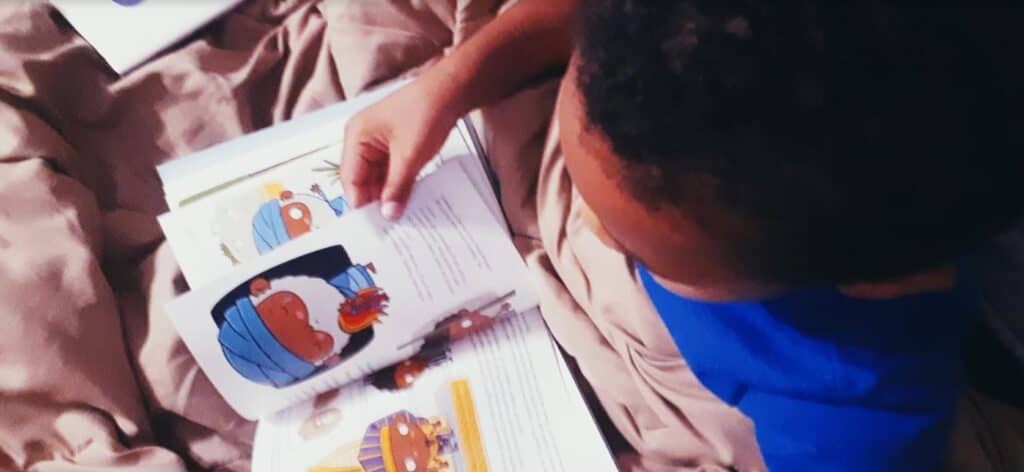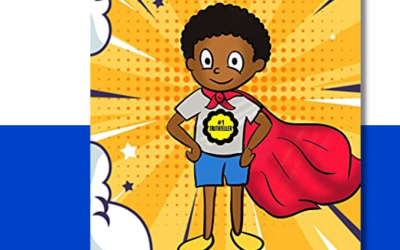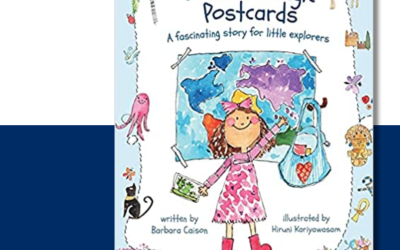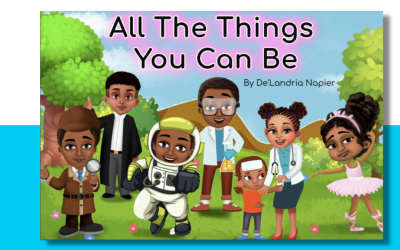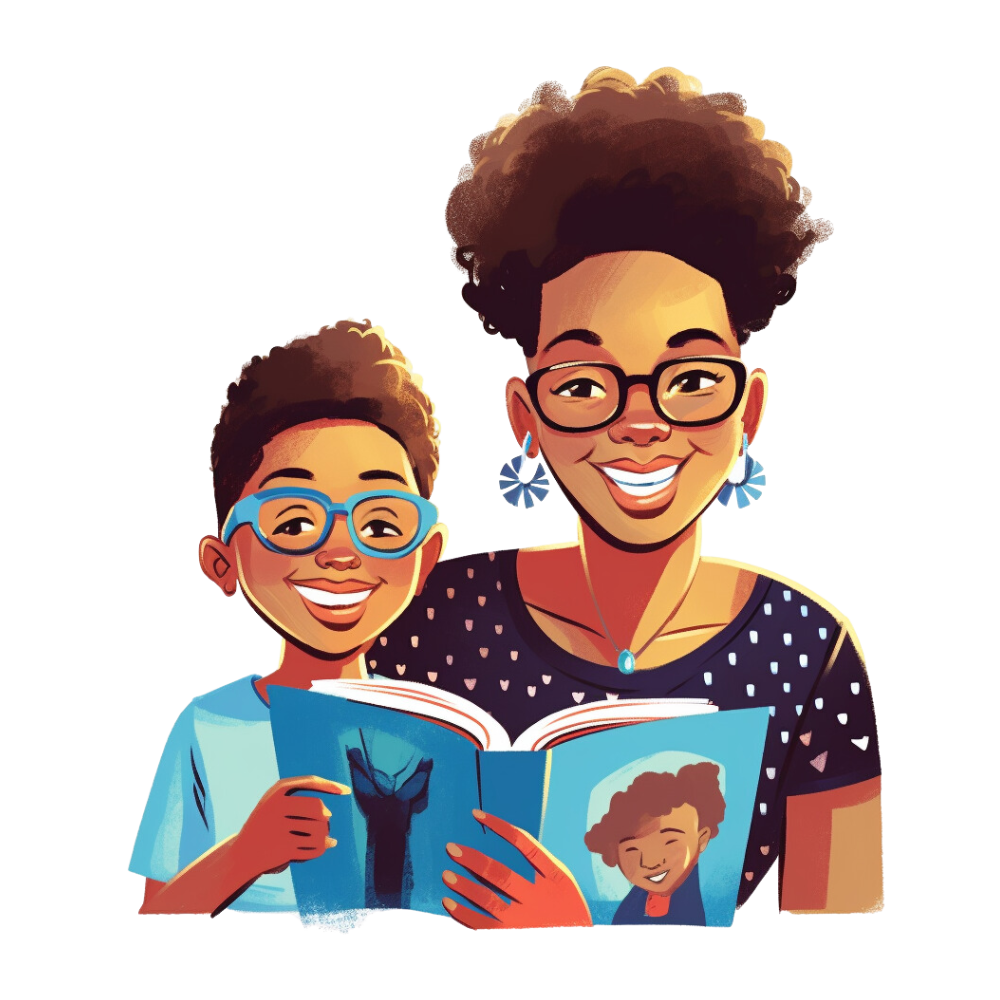Sharing is caring!
Children’s Books, Bedtime, and the Busy Mom: A Conversation with Rebecca Dash Donsky
Is it possible to transform bedtime… with children’s books? Absolutely yes! Books and bedtime go hand in hand. Meet Rebecca Dash Donsky, Certified Child Sleep Consultant on a mission to help you win back sleep. Rebecca, through her company Little Monster Sleep Solutions, serves families with children aged 6 months to 6 years old, and specializes in helping families of tough cookie babies, toddlers, and preschoolers.
We sat down to learn more about each other, and chat all things books and bedtime! If you have ever struggled with what books to read to your kids, how to get them to sleep and save your sanity, this post is a must-read. Let’s dig in:
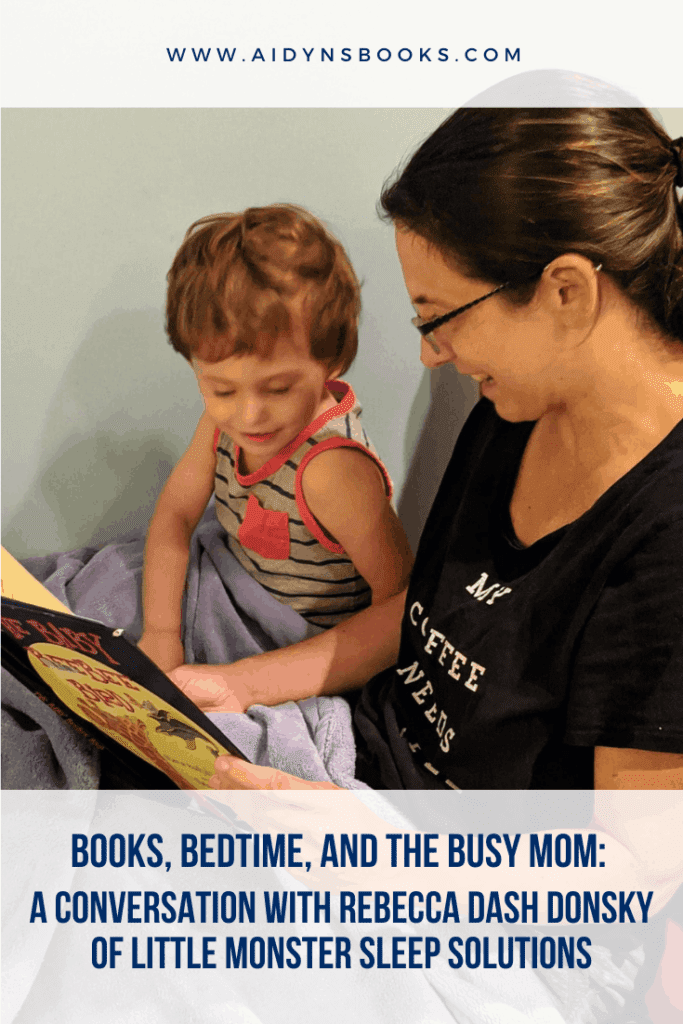
Quinn (QC): How did Little Monster Sleep Solutions start?
Rebecca (RD): Little Monster was a FOMO baby from the start, arriving over 2 weeks early. No one tells you that sleep can be such a challenge!!! After a brutal first year full of sleep deprivation, we finally hired someone to help us with sleep training. She got us over the hump, but we disagreed on the finer points and I decided to do my own research. I finished the job and he started sleeping and napping beautifully for the first time in his life. I realized that sleep coaching touched upon all of my passions – research, creative problem-solving, and helping families improve their lives. After a 16 week course, I became a certified child sleep consultant through the Family Sleep Institute, and Little Monster Sleep Solutions was born in July of 2018.
RD: What inspired the creation of Aidyn’s Books?
QC: We started Aidyn’s Books on Instagram just to share our journey with books. Reading was such a huge part of my life as a kid, I wanted the same for Aidyn. Plus, he always loved watching other kids’ lives on YouTube. I wanted him to appreciate his reading life. I wanted to show him that other people also get excited about books. It grew because I realized that using story, I could have meaningful dialogue with him. This is important, especially as a single mom, we always feel we aren’t doing enough. The dialogue we have around books help shape our child’s journey.
RD: You said that you have always been into books. Can you share a childhood memory of reading with a special adult?
QC: My mother was an avid reader of Christian based books and the Bible. She also gave me the freedom to go to the library by myself at a young age. She came with me at first. When she saw, however, that I wanted to go every day, ALL day — the freedom came. I will always appreciate the trust she showed and how that trust manifested as a ‘push’ to keep reading and enjoying books. My grandmother as well – she is an ardent literature enthusiast. Even today, you can always catch her on her Kindle reading a book.
RD: What is your childhood favorite book? What has been Aidyn’s favorite?
QC: I probably had a favorite childhood book as a kid, however, there is no author that spoke to me more than Lois Duncan. She really shaped my late middle school years and led me down the path of author study.
Aidyn’s all-time favorite book is Good Night Owl by Greg Pizzoli.
RD: How long should a parent spend reading to their child every day?
QC: Research shows that 20 minutes a day is ideal. If you only have 20 minutes, I would do 5-10 minutes of reading and use the remaining minutes to create dialogue around the book. The point is to bond with the child, all while building up their reading and listening comprehension. We want to create dialogue around the book, but not make it like an SAT study session. Ask light questions, “Would you do it that way?” “What do you think will happen next?” “That was a cool ending! How would you end the story if you were the author?” Try not to walk away without knowing they understand some of the text.
RD: What about wiggly kids who don’t seem to be paying attention? Are they reaping any benefits from storytime?
QC: They absolutely do not need to sit for the whole book. My son doesn’t. He is 6 and still moves around the room when I am reading. You may be surprised to find that they are still listening. Research shows that when we give kids items to keep their hands busy when we are reading they may even listen better!
RD: How can parents most effectively share books with babies and toddlers?
QC: For babies and toddlers, give them time to play with the pages. That’s scary for some parents. But kids need time to associate books with pleasure. If we are constantly snatching books out of their hands, it takes away from the experience. This is a good time for nice and sturdy boards books. Pick books that are full of beautiful colors and allow the child to touch and feel textures.
RD: How do parents go about choosing the “right” book for their children?
QC: Pay attention to what your kids like. Are they into dinosaurs? Look for dinosaur books. Do you have concerns about their friendships or something going on at school? Look for books that focus on those themes. Or reach out to me and I will put together a list for you.
RD: How about for older children, who are starting to read on their own? How can parents help them pick books?
QC: I want to emphasize that I am a passionate advocate for read alouds, even for older kids. Parents can still and should read aloud to older kids. Of course the selections change, but read aloud should still be part of the routine. This can be done through family book clubs, audio books, short prose, the options abound.
For independent reading, I would allow them to choose their books. You can guide them by reaching out to your librarian for recommended and popular books, check out awarded children’s books or consult an Usborne rep for recommendations.
RD: What is your #1 tip for busy parents trying to make time for reading with their child?
QC: Take it slow. Don’t try to read a whole chapter book in one night or even a lengthy picture book. Pick a book with amazing illustrations to draw them in and do 5 minutes a night and build up.
QC: What books do you recommend for bedtime?
RD: I have a booklist on bookshop.org! For babies, I suggest calming books that promote a sense of closeness, love, and relaxation. Once the child is 18 months or so, I also include books that model ideal behaviors around sleep. Some of them are really funny and fun – it’s much easier to get their buy-in that way.
QC: What about books with lights and bright colors close to bedtime?
RD: I think twinkly lights are okay, especially in the context of a sweet bedtime book. If they were more rave-like I would feel differently!
QC: What criteria do you look for in selecting books for storytime? How did you compose your list?
RD: My booklist is focused on books that calm kids down and help them understand what needs to happen at bedtime/overnight. They are all books I have either owned/borrowed for Little Monster, read in the library while he was playing, or did some extensive research on.
QC: Where does reading fit into a bedtime routine?
RD: It’s my favorite part! It is never too early to read to your little one. Tiny babies only need a few pages – by the time they’re 3 or 4, you’ll probably have heard the demand for “one more” more than a few times! While it’s so easy to give in – after all, who doesn’t love instilling early literacy skills while snuggling – it’s also really important to limit the number of books or the time spent reading before bed. Toddlers and preschoolers are very good at stalling, and it’s so hard to say no when they plead for another book! I generally recommend 1-2 books for toddlers (depending on length) and 10 minutes for children who are into longer books. Of course, it’s one thing to set the limit, but it’s got to be consistently maintained!
QC: How long does it take to set a sleep routine?
RD: I recently wrote a blog post about setting up an awesome bedtime routine! The good news is, you’re probably already doing some version of one. If you do certain things before bedtime every night, that’s a routine! It can be lengthened or shortened as needed. Remember, it doesn’t have to be long and elaborate – short and sweet and CONSISTENT is the best way to go. You don’t want to be in there forever!
QC: How much sleep do children need?
RD: It really varies by age. Newborns sleep 15-18 hours per 24 hours; by the time a child is in elementary school, it’s closer to 10-11. For the vast majority of young childhood, they need 11-13 hours overnight, plus age appropriate naps. They are usually on 3 naps by 6mo, 2 naps by 9mo, 1 nap by 18mo, and the last nap drops between ages 3 and 5.
QC: How does lack of sleep affect a child? Especially when it comes to learning and retaining information.
RD: Chronically overtired children have trouble paying attention, sitting still, absorbing new information, navigating emotional situations, and are at greater risk for obesity and diabetes. Our bodies regulate our metabolism and immune systems when we sleep, and in children, that’s when they grow!
QC: Are there any foods to stay away from close to bed time?
RD: The link between sugar and hyperactivity turns out to be bunk! (Though I know there are children that are strongly affected by certain additives.) Generally, it’s best to steer clear of heavy, greasy foods right before bed. If your child’s sleep is frequently disrupted by night poops, it’s a good idea to look at the timing of their last meal and how much fiber they’re eating then.
QC: How do you feel about screen time close to bed? Is there a certain amount of time before bed screen time should stop?
RD: I never want to judge parents for giving screen time close to a sleep period, especially during this pandemic. After all, it can give us a much needed break before the bedtime rush. We’ve definitely been more lax with Little Monster as the number of hours we have to entertain him has drastically increased.
However…scientifically, the blue light emitted by electronic devices – TVs, computers, phones, tablets – disrupts melatonin production. The shows that kids watch can frequently amp them up instead of calm them down, especially exciting, fast-moving cartoons. Neither of these will make for a chill bedtime and restful drop into sleep! All screen time should ideally end 1-1.5h before sleep time.
Here is Aidyn’s favorite bedtime video. It knocks him out like a light!
QC: What tools should parents have to help at bedtime?
RD: If you add three things to your child’s room to make bedtime easier, it would be a dimmable light source, a white noise machine, and blackout curtains. The routine is best done in dim light to kick start the melatonin production, the white noise blocks out disruptive sounds from the rest of the house and outside, and the blackout curtains are CLUTCH for naps, summer evenings, and early mornings.
QC: Do you recommend lavender or other sleep aids?
RD: You have to be REALLY careful when it comes to putting anything in or on their bodies. Essential oils are not a miraculous cure-all – lavender-scented lotion is fine, but don’t put undiluted oils on children. Here are some guidelines from Johns Hopkins.
The other one I want to mention is melatonin. Whenever you’re considering giving your child a synthetic hormone, you have to make sure you’ve exhausted all other avenues to improve their sleep AND speak to their pediatrician. It won’t really help with underlying issues like an inappropriate schedule or a lack of boundaries around sleep behavior. There are certain neurological, physiological, and developmental disorders that make sleep extremely difficult for children and necessitate the use of melatonin, but that’s a whole different story that I am not qualified to get into! Talk to your pediatrician about any and all medical issues.
Do you have a great bedtime routine, blackout curtains, and white noise but are still struggling with your child’s sleep? Head on over to Little Monster Sleep Solutions and book a FREE 15-minute call today. She will get your family the rest you deserve.
Trying to regulate your child’s sleep habits for back to school time? Check out Rebecca’s helpful tips here: Sleep: An Essential Back-to-School Supply
Check out Aidyn’s Books favorite books for bedtime below:


